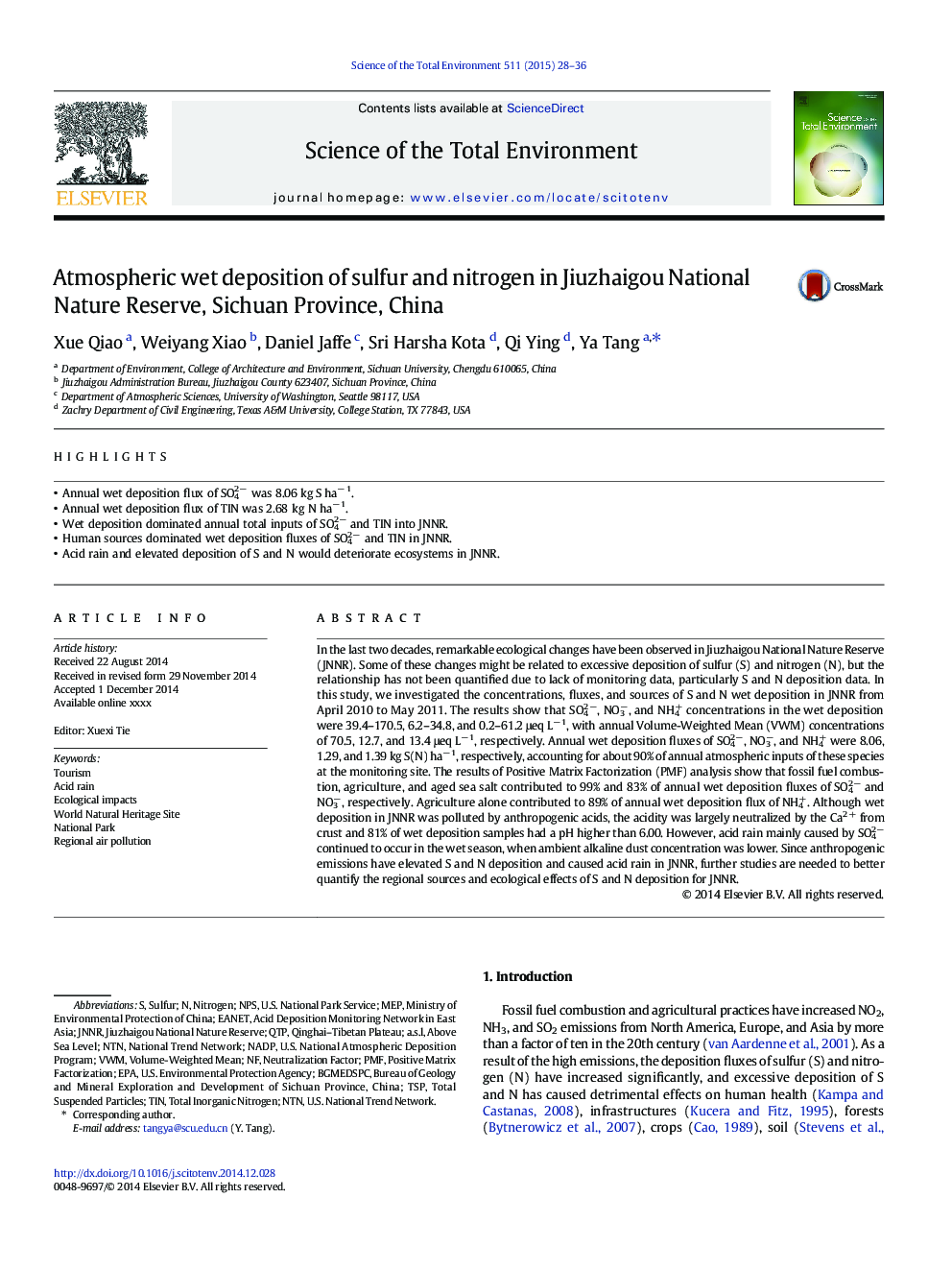| Article ID | Journal | Published Year | Pages | File Type |
|---|---|---|---|---|
| 6327401 | Science of The Total Environment | 2015 | 9 Pages |
Abstract
In the last two decades, remarkable ecological changes have been observed in Jiuzhaigou National Nature Reserve (JNNR). Some of these changes might be related to excessive deposition of sulfur (S) and nitrogen (N), but the relationship has not been quantified due to lack of monitoring data, particularly S and N deposition data. In this study, we investigated the concentrations, fluxes, and sources of S and N wet deposition in JNNR from April 2010 to May 2011. The results show that SO42â, NO3â, and NH4+ concentrations in the wet deposition were 39.4-170.5, 6.2-34.8, and 0.2-61.2 μeq Lâ 1, with annual Volume-Weighted Mean (VWM) concentrations of 70.5, 12.7, and 13.4 μeq Lâ 1, respectively. Annual wet deposition fluxes of SO42â, NO3â, and NH4+ were 8.06, 1.29, and 1.39 kg S(N) haâ 1, respectively, accounting for about 90% of annual atmospheric inputs of these species at the monitoring site. The results of Positive Matrix Factorization (PMF) analysis show that fossil fuel combustion, agriculture, and aged sea salt contributed to 99% and 83% of annual wet deposition fluxes of SO42â and NO3â, respectively. Agriculture alone contributed to 89% of annual wet deposition flux of NH4+. Although wet deposition in JNNR was polluted by anthropogenic acids, the acidity was largely neutralized by the Ca2 + from crust and 81% of wet deposition samples had a pH higher than 6.00. However, acid rain mainly caused by SO42â continued to occur in the wet season, when ambient alkaline dust concentration was lower. Since anthropogenic emissions have elevated S and N deposition and caused acid rain in JNNR, further studies are needed to better quantify the regional sources and ecological effects of S and N deposition for JNNR.
Keywords
Related Topics
Life Sciences
Environmental Science
Environmental Chemistry
Authors
Xue Qiao, Weiyang Xiao, Daniel Jaffe, Sri Harsha Kota, Qi Ying, Ya Tang,
